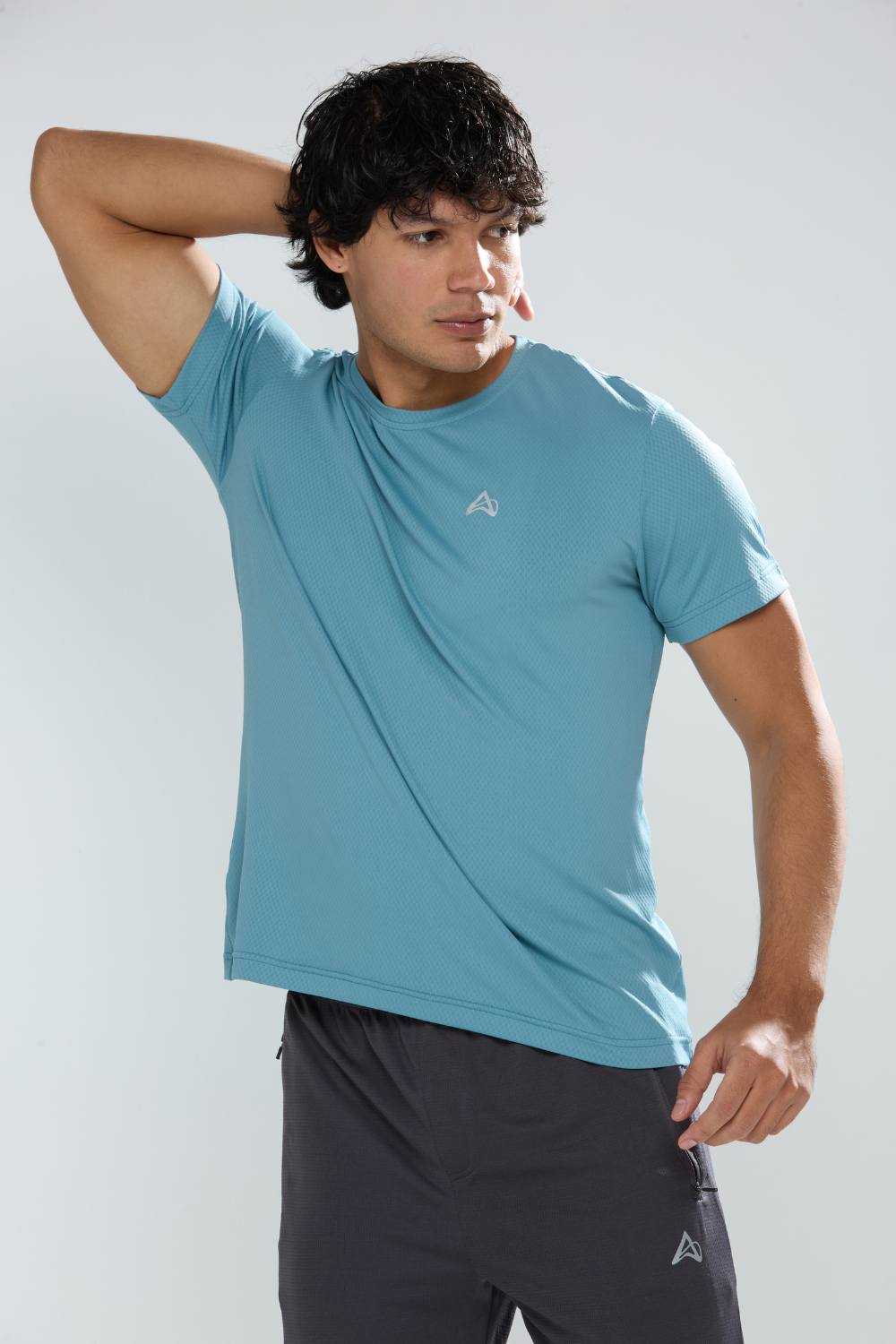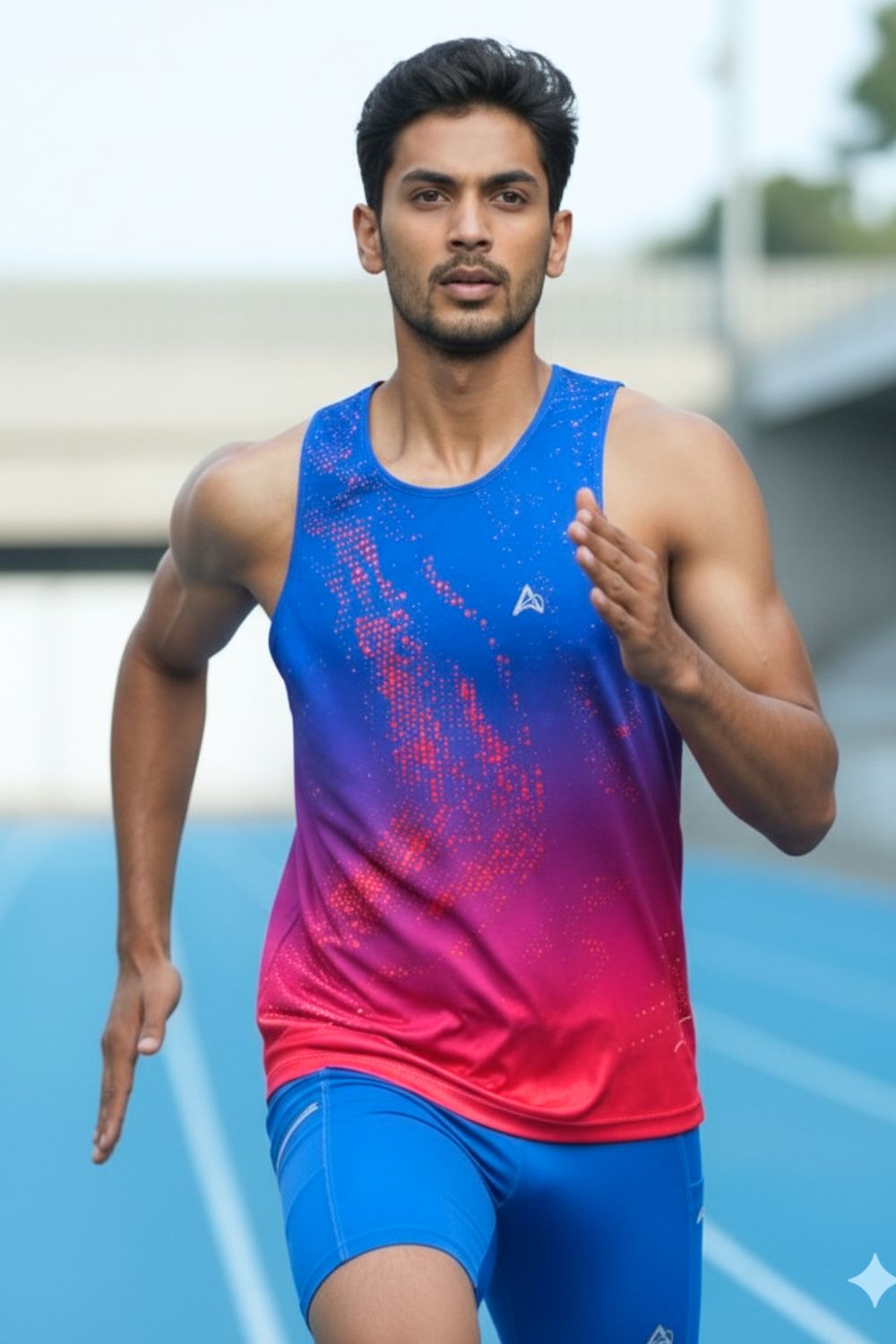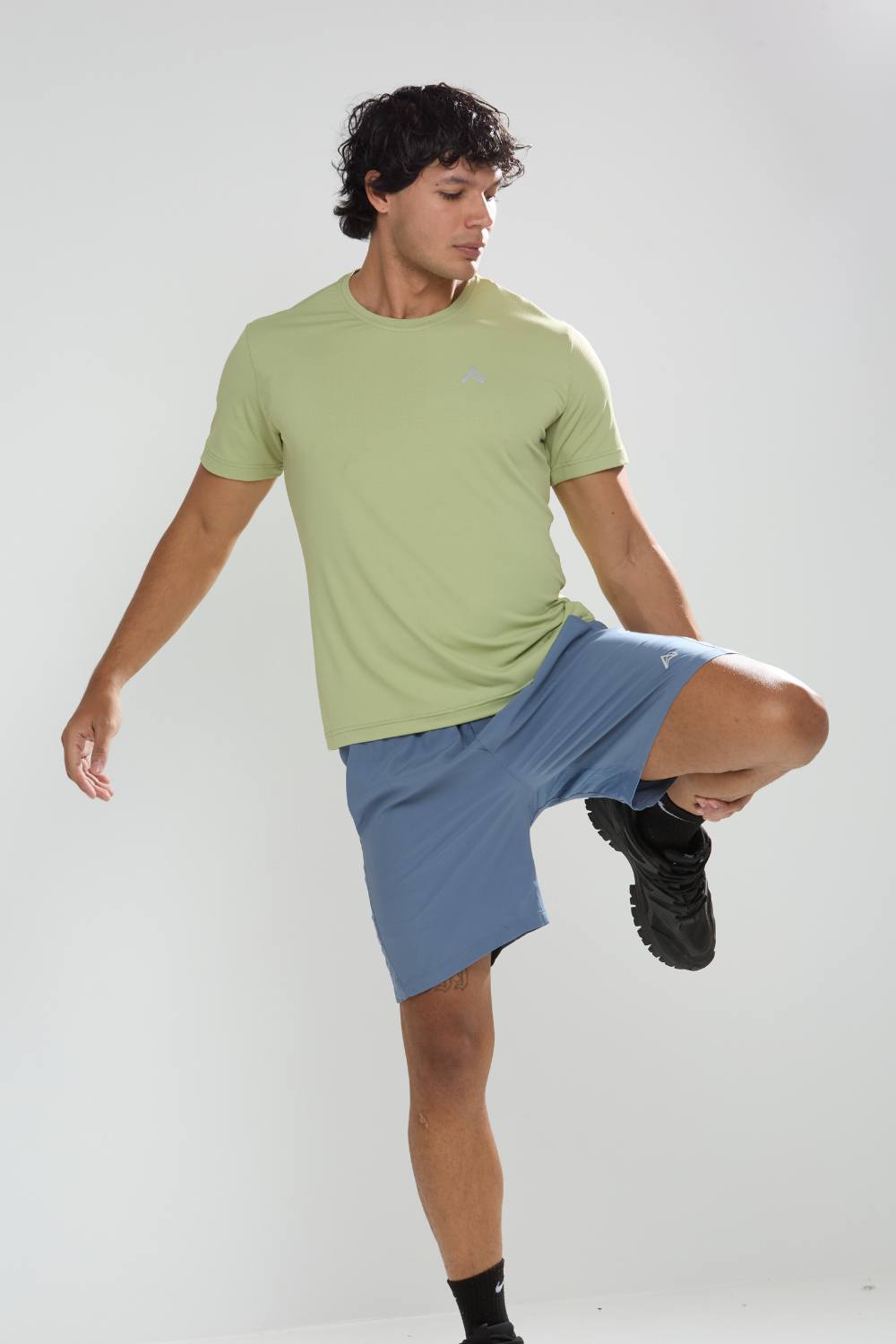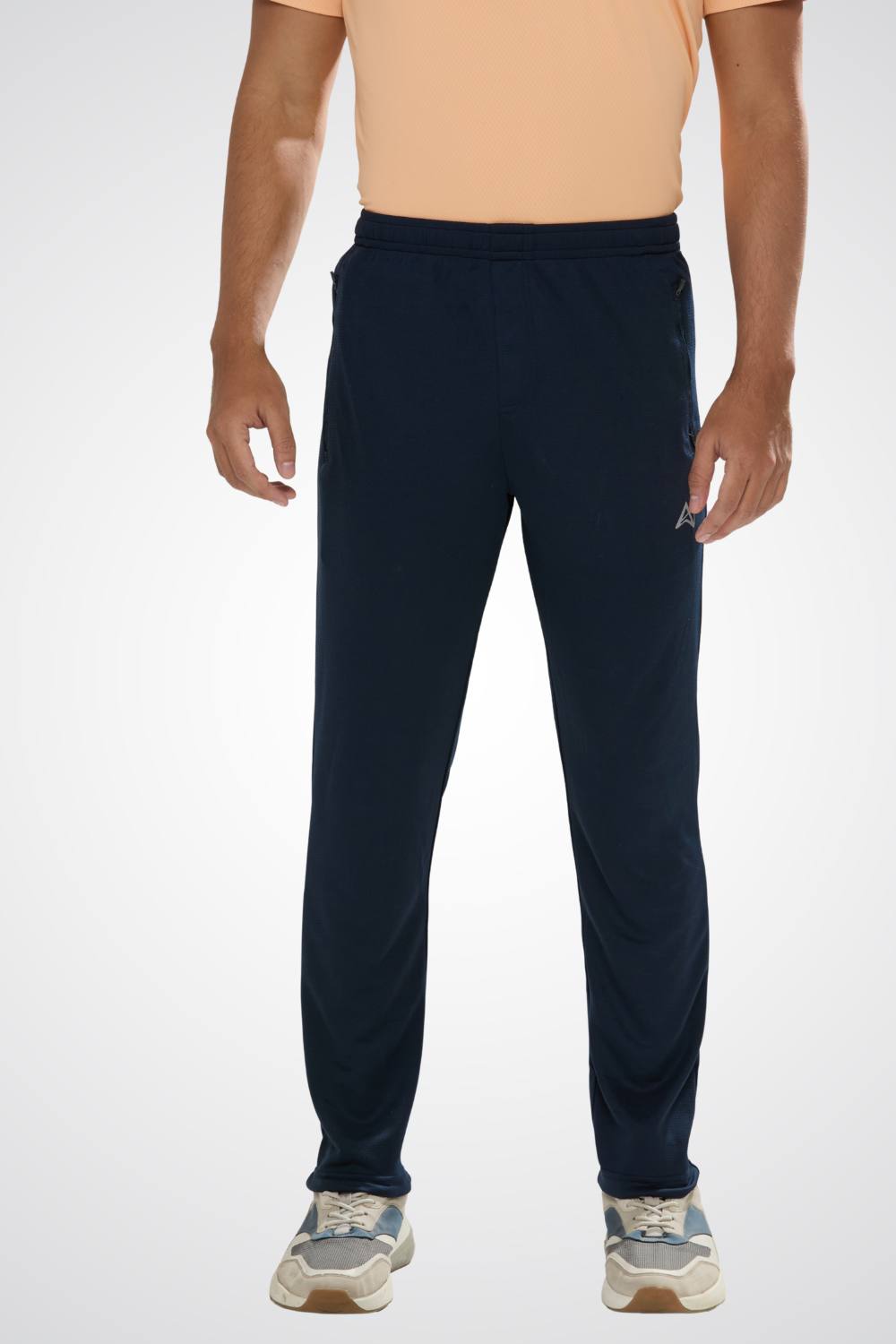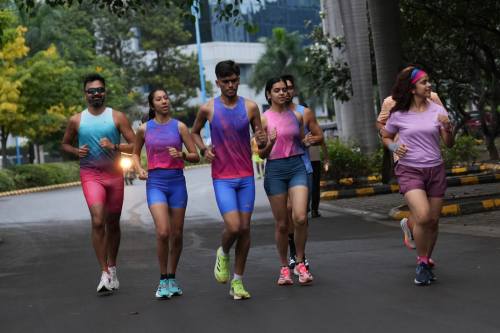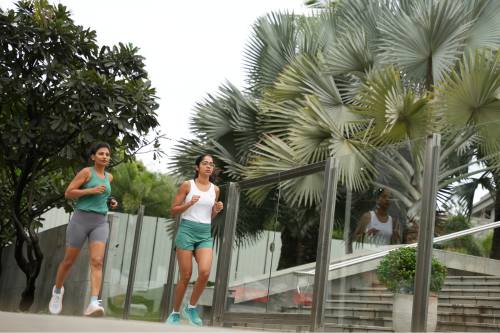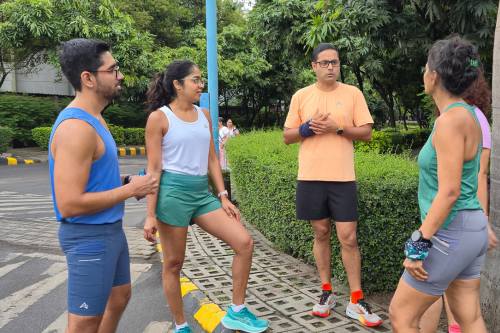Quick Listen:
Imagine the quiet hum of early morning streets, broken only by the soft patter of footsteps. A runner emerges, dressed in unassuming black tights and a whisper-thin top that hugs the body like a second skin. No flashy accents, no excess fabric just engineered precision that lets every muscle breathe and move freely. This isn't mere fashion; it's the new frontier of running apparel, where minimalist principles collide with peak performance to create gear that empowers rather than encumbers. As of 2024, the global running gear market stood at a robust USD 44.18 billion, propelled by a surge in health consciousness and participation in events like marathons and trail runs. Projections from IMARC Group point to this sector swelling to USD 69.86 billion by 2033, growing at a steady CAGR of 5.18% from 2025 onward. North America leads with over 31.1% market share, a testament to its fitness-obsessed culture. In this landscape, minimalist running apparel isn't a niche it's the smart evolution, blending subtle style with innovations that keep runners faster, cooler, and more connected to their stride.
Tired of gear that slows you down? Chafing, soggy fabrics, and missing pockets kill your run's momentum. At Aguante, we're runners who get it. Our high-performance activewear features moisture-wicking fabrics, ergonomic designs, and smart storage to keep you focused. Shop Now!
The Intersection of Style and Function
At its core, minimalist running apparel thrives on a philosophy of restraint: eliminate the superfluous to amplify what matters. A simple tank top, for instance, might conceal advanced moisture-wicking layers that evaporate sweat in seconds, or seams strategically placed to prevent chafing during long hauls. This isn't about stripping away utility; it's about refining it to its essence. Runners, from weekend warriors to elite competitors, now seek clothing that anticipates their needs breathable enough for humid summers, insulating without bulk for crisp autumns. This demand stems from a broader cultural pivot toward mindful consumption, where apparel must justify its place in a packed gym bag not just by looks, but by lived performance.
The data underscores this shift with unyielding clarity. Custom Market Insights pegs the running apparel sector at USD 16,012.1 million in 2024, forecasting a climb to USD 25,053.7 million by 2033 at a CAGR of 5.1%. Europe claims the lion's share as the largest market, while Asia-Pacific surges ahead as the fastest-growing region, fueled by rising disposable incomes and urban fitness booms. Mordor Intelligence offers a complementary view, estimating the market at USD 90.44 billion in 2025, en route to USD 131.89 billion by 2030 with a brisk 7.84% CAGR. These figures aren't abstract; they're driven by tangible forces: heightened health awareness prompting more people to lace up, breakthroughs in fabric technology like compression weaves and anti-microbial treatments, and a seamless merge of athletic wear with lifestyle pieces that transition from track to town. Minimalist designs, with their neutral palettes and ergonomic cuts, sit at the heart of this, offering versatility that resonates across demographics from young urbanites in Tokyo to seasoned marathoners in New York.
Consider the ripple effects. In the U.S. alone, over 30 million people joined endurance events last year, per industry reports, amplifying demand for gear that supports sustained effort. Technological tweaks, such as integrated smart sensors in fabrics, allow real-time monitoring of vitals, turning apparel into an extension of the runner's data-driven mindset. Yet, it's the understated elegance clean lines in charcoal or slate that makes these pieces enduring wardrobe staples, proving that true innovation often whispers rather than shouts.
From Functional to Fashionable: Key Trends
Step into a specialty running shop today, and the transformation is palpable. Shelves once cluttered with vibrant, logo-drenched kits now showcase collections in subdued earth tones: deep navies, muted grays, and versatile blacks that pair as effortlessly with jeans as they do with compression shorts. This pivot toward streamlined silhouettes isn't whimsy; it's a calculated response to runner's pleas for gear that flatters without friction. Fabrics have evolved dramatically think four-way stretch synthetics that contour to the body, reducing drag by up to 10% in wind-tunnel tests, or gel-infused panels that cushion high-impact zones. Anti-odor tech, derived from silver ions or natural bamboo extracts, ensures freshness mile after mile, while UV-blocking weaves shield skin during open-road treks.
Sustainability weaves through these advancements like a common thread. With consumers increasingly scrutinizing labels, brands are championing recycled polyester from ocean plastics and bio-based fibers that biodegrade post-use. This eco-ethos aligns perfectly with minimalist tenets: fewer materials mean less waste, and durable construction extends product life cycles. In Europe, where over 60% of buyers prioritize green credentials, such practices aren't optional they're market mandates. Meanwhile, the infusion of smart textiles marks a leap forward; imagine a tee embedded with biometric threads that sync with your watch, alerting you to hydration dips or form breakdowns. These aren't gimmicks; they're game-changers, especially as Asia-Pacific's explosive growth projected at an 8.32% CAGR through 2030 brings tech-savvy millennials into the fold.
Broader trends amplify this momentum. The athleisure boom blurs lines between gym and street, with running tops doubling as casual layers and bottoms versatile enough for yoga flows. Women's segments, growing at a 9.21% CAGR, demand gender-specific fits that empower without constriction, from high-waisted tights with reflective piping to seamless bras that minimize bounce. Accessories, too, lean minimalist: technical socks with targeted cushioning or lightweight hats with ventilation mesh. As urbanization swells in emerging markets, these pieces cater to city runners navigating concrete jungles, where multifunctionality reigns supreme. The result? A market not just expanding, but elevating where every trend serves the runner's unyielding pursuit of efficiency and grace.
How Brands Are Redefining the Game
Industry titans are not just adapting to these currents; they're channeling them into iconic lines that set benchmarks. Lululemon's Fast and Free collection exemplifies this mastery, delivering ultra-lightweight leggings and tops with airy fabric panels that slash bulk while preserving essential pockets for gels or keys. Launched with a 2025 refresh emphasizing a "barely-there" sensation, these pieces crafted from Nulu-like blends have runners raving about their seamless shift from dawn patrols to post-run brunches. The high-rise tights, in particular, feature simplified waistbands that lock in without digging, embodying minimalist ethos in every contour.
On Running, the Swiss precision engineers, push boundaries with their Performance-T shirts, updated for 2025 with enhanced moisture management that keeps fabric dry even in downpours. Drawing from the Spring/Summer Run Collection's "soft wins" philosophy inspired by collaborations like Sesame Street's Elmo for approachable performance these tees prioritize buttery-soft touches alongside rigorous functionality. Runners report a 20% improvement in comfort during high-mileage weeks, thanks to antimicrobial linings and ergonomic seaming that follows the body's natural lines. It's apparel that feels intuitive, almost anticipatory.
Tracksmith, beloved by those who savor running's heritage, infuses retro-minimalism into its Fall 2025 Runner's Routine lineup. Tailored shorts in merino wool blends offer antimicrobial properties and a fit so featherlight it's often described as "vanishing" on the leg. Their tops, with subtle color blocking in heritage hues, nod to track-and-field golden eras while incorporating modern perks like laser-cut vents for breathability. Urban devotees flock to these for their polish gear that withstands a 10K grind yet cleans up for casual outings. Social feeds overflow with endorsements: one X user quipped, "Tracksmith shorts: 10 miles tested, brunch approved." These brands, alongside giants like Nike and Adidas, dominate through relentless R&D, with key players like ASICS and Puma SE innovating in compression and recovery-focused textiles. Their success? Delivering on the promise that minimalist doesn't mean compromise it means mastery.
Balancing Minimalism with Maximum Functionality
Yet, for all its allure, crafting minimalist apparel demands a surgeon's precision. Engineers grapple with embedding features UV shields, thermal regulation without bloating silhouettes or hiking costs. Sustainable fabrics, while virtuous, often command premiums that challenge accessibility; a pair of recycled tights might cost 20% more than synthetics, testing price-sensitive newcomers. Misconceptions linger too: some dismiss sleek designs as underpowered, overlooking how a streamlined jacket can outperform bulkier foes in thermoregulation tests.
Supply chains compound these trials. Sourcing bio-based materials at volume remains fraught, with global disruptions inflating lead times. Brands must calibrate for inclusivity, ensuring fits span diverse body types without sacrificing that second-skin precision. Still, adversity breeds ingenuity partnerships like enzymatic recycling pacts promise scalable sustainability, turning hurdles into high ground.
Why Minimalist Apparel Is a Growth Opportunity
Beyond challenges lies a goldmine. Minimalism carves distinct brand identities in a saturated arena, where a cohesive, understated lineup fosters loyalty. Streamlining SKUs trims overheads fewer variants mean leaner inventories and sharper forecasting. Premiumization thrives here; runners gladly pay up for proven performers that moonlight as athleisure, boosting cross-sales in mature markets like North America.
Expansion beckons globally: Asia-Pacific's 8.32% CAGR signals untapped urban hordes, while Latin America's youthful demographics crave event-ready gear. Data from SFIA shows 78.8% of Americans active in 2023, a base ripe for upselling multipurpose minimalists. For savvy firms, this isn't growth it's acceleration.
The Future of Running Apparel: Less Can Be More
As marathon seasons crest and fitness resolutions ignite, minimalist running apparel stands resolute: a beacon of purposeful design in an overloaded world. Rooted in runner's quests for gear as disciplined as their training sustainable, smart, and subtly striking its trajectory mirrors the market's: inexorable ascent. Innovations in personalized weaves and AI-optimized fits loom large, while eco-mandates sharpen competitive edges.
For the athlete, the takeaway endures: simplicity amplifies strength. That unpretentious tee or lithe legging isn't attire it's arsenal, honing each stride toward transcendence. With the sector sprinting toward a USD 131.89 billion horizon by 2030, minimalist mastery affirms a profound truth: the leanest paths often lead farthest.
Frequently Asked Questions
Which brands are leading the minimalist running apparel trend in 2025?
Top brands reshaping minimalist running gear include Lululemon with their Fast and Free collection featuring ultra-lightweight fabrics and "barely-there" sensation, On Running's Performance-T shirts with enhanced moisture management, and Tracksmith's Fall 2025 Runner's Routine lineup combining retro-minimalism with modern functionality. These brands focus on delivering premium materials like merino wool blends and antimicrobial linings while maintaining clean, understated aesthetics that work for both performance and lifestyle wear.
What makes minimalist running apparel better than traditional athletic wear?
Minimalist running apparel focuses on eliminating unnecessary elements while maximizing performance features like advanced moisture-wicking, strategic seam placement, and four-way stretch fabrics. This approach reduces drag by up to 10% in wind-tunnel tests while providing versatile pieces that transition seamlessly from running to casual wear. The streamlined designs prioritize functionality over flashy aesthetics, resulting in gear that enhances rather than encumbers your performance.
How is the running apparel market expected to grow, and what's driving this trend?
The global running apparel market is projected to reach USD 131.89 billion by 2030, growing at a 7.84% CAGR, with Asia-Pacific leading growth at 8.32% annually. This expansion is fueled by increased health consciousness, with over 30 million Americans participating in endurance events annually, plus technological advances like smart textiles and sustainable materials. The rise of athleisure culture, where running gear doubles as everyday wear, further drives demand for versatile, minimalist designs.
Disclaimer: The above helpful resources content contains personal opinions and experiences. The information provided is for general knowledge and does not constitute professional advice.
You may also be interested in: How Ergonomic Fit Improves Running Performance: A Deep Dive
Tired of gear that slows you down? Chafing, soggy fabrics, and missing pockets kill your run's momentum. At Aguante, we're runners who get it. Our high-performance activewear features moisture-wicking fabrics, ergonomic designs, and smart storage to keep you focused. Shop Now!
Powered by flareAI.co





